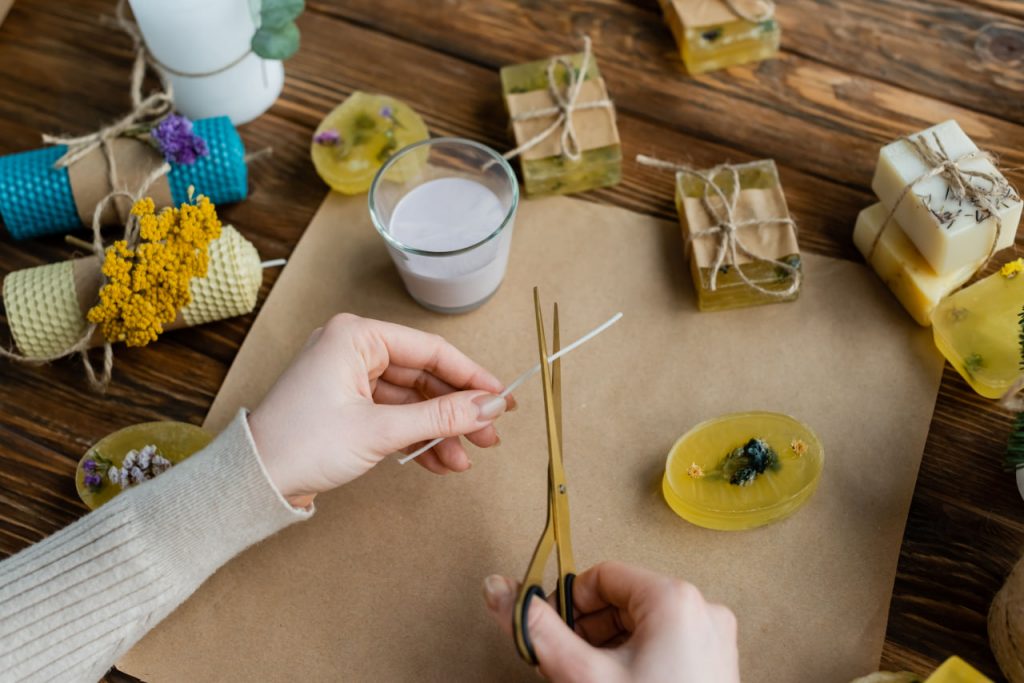Dyeing candles allows you to customize them and add a personal touch that complements your décor. Whether you’re making candles for a special occasion or simply experimenting with new techniques, here are some creative methods for adding color to your candles:
1. Choosing the Right Dye for Your Wax
When dyeing candles, it’s essential to use wax-safe dyes. There are several types available, including liquid dyes, block dyes, and powdered dyes. Liquid dyes are easy to use and blend well, while block dyes are often more concentrated, requiring less product. Powdered dyes are ideal for pastel shades, giving a softer, lighter color.
2. How to Add Dye to Your Wax
To add color, first melt your wax in a double boiler or a microwave-safe container. Once the wax reaches its melting point (around 170°F or 77°C), carefully add the dye of your choice. Stir gently to ensure the dye is fully incorporated. Be mindful of how much dye you add—the more dye you use, the darker and more vibrant the candle will be. Test a small amount first to achieve your desired shade.
3. Layering Colors for a Stunning Effect
One of the best ways to add a unique touch to your candles is by layering different colors. Pour one color of wax into your mold, let it harden slightly, and then pour a second layer of a different color. Continue layering as desired, allowing each layer to harden before adding the next. This technique works well for creating candles with gradients or even a rainbow effect.
4. Marbling: A Beautiful and Unexpected Look
For a marbled effect, you can swirl different colored waxes together in a mold. Pour one color of wax and allow it to cool for a minute or two, then pour a different color on top. Before it completely hardens, swirl the two colors together using a skewer or spoon. The result will be a stunning marbled candle that is as visually striking as it is aromatic.
5. Adding Color to Embeds or Decorative Elements
Another way to add color is by using embeds—small pieces of wax that are added to the surface or within the layers of a candle. These can be dyed in different colors and placed strategically to add a fun, artistic touch. You can also color decorative elements such as dried flowers or herbs before embedding them into the candle.
6. Creating Multi-Colored Candles with Different Wax Types
If you’re feeling experimental, try combining different types of wax for a multi-colored effect. For instance, blend soy wax with beeswax or paraffin to create layers of color with varying textures. This can create a stunning contrast in both color and finish.
7. Consider the Candle’s Purpose
When selecting colors, think about the ambiance or purpose of the candle. For instance, red and pink are often associated with romance and love, making them ideal for Valentine’s Day or weddings. Blue and green shades tend to evoke calm and serenity, perfect for relaxation. Choose colors that complement the mood you want to create.
Conclusion
Dyeing candles offers endless creative possibilities and can transform simple wax into an artistic masterpiece. Whether you’re looking for a subtle pastel effect or a bold, vibrant hue, the techniques outlined above will help you craft candles that are as visually appealing as they are functional. Experimenting with colors and patterns can also be a fun and relaxing part of the candle-making process.

